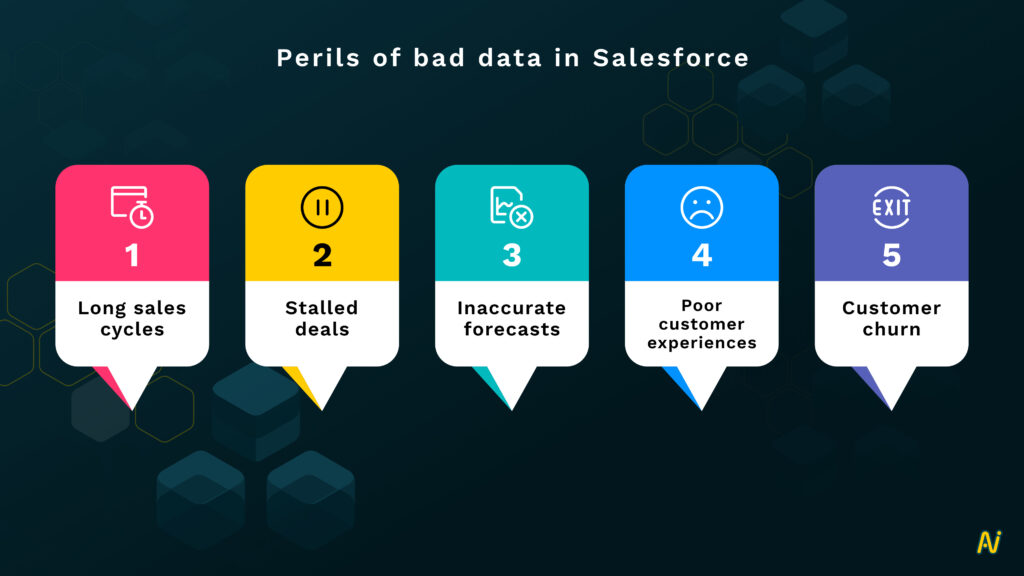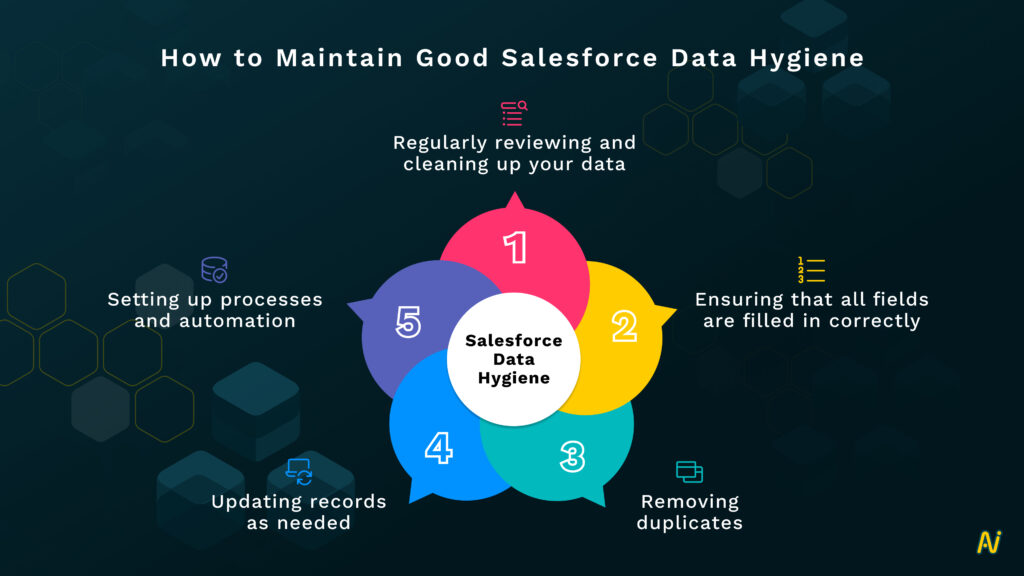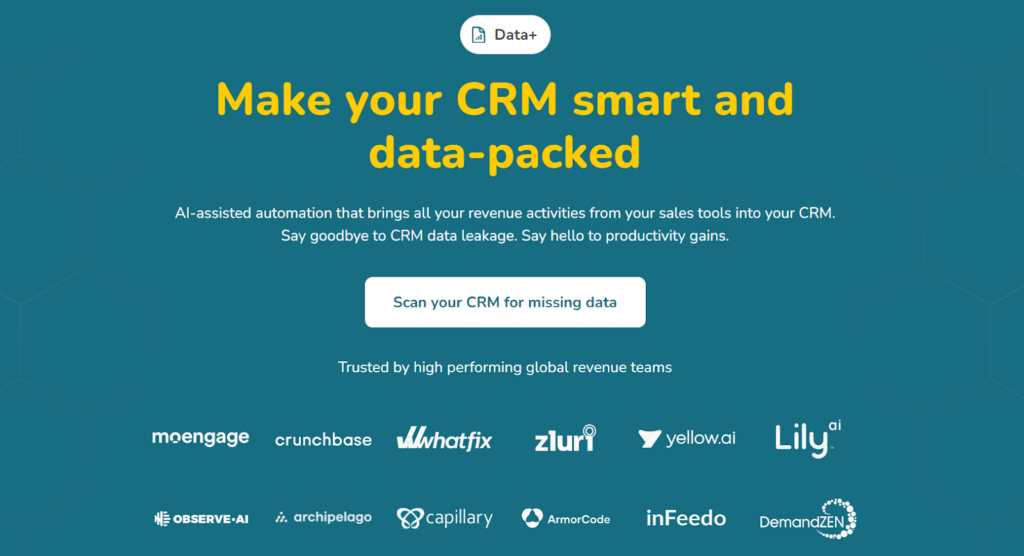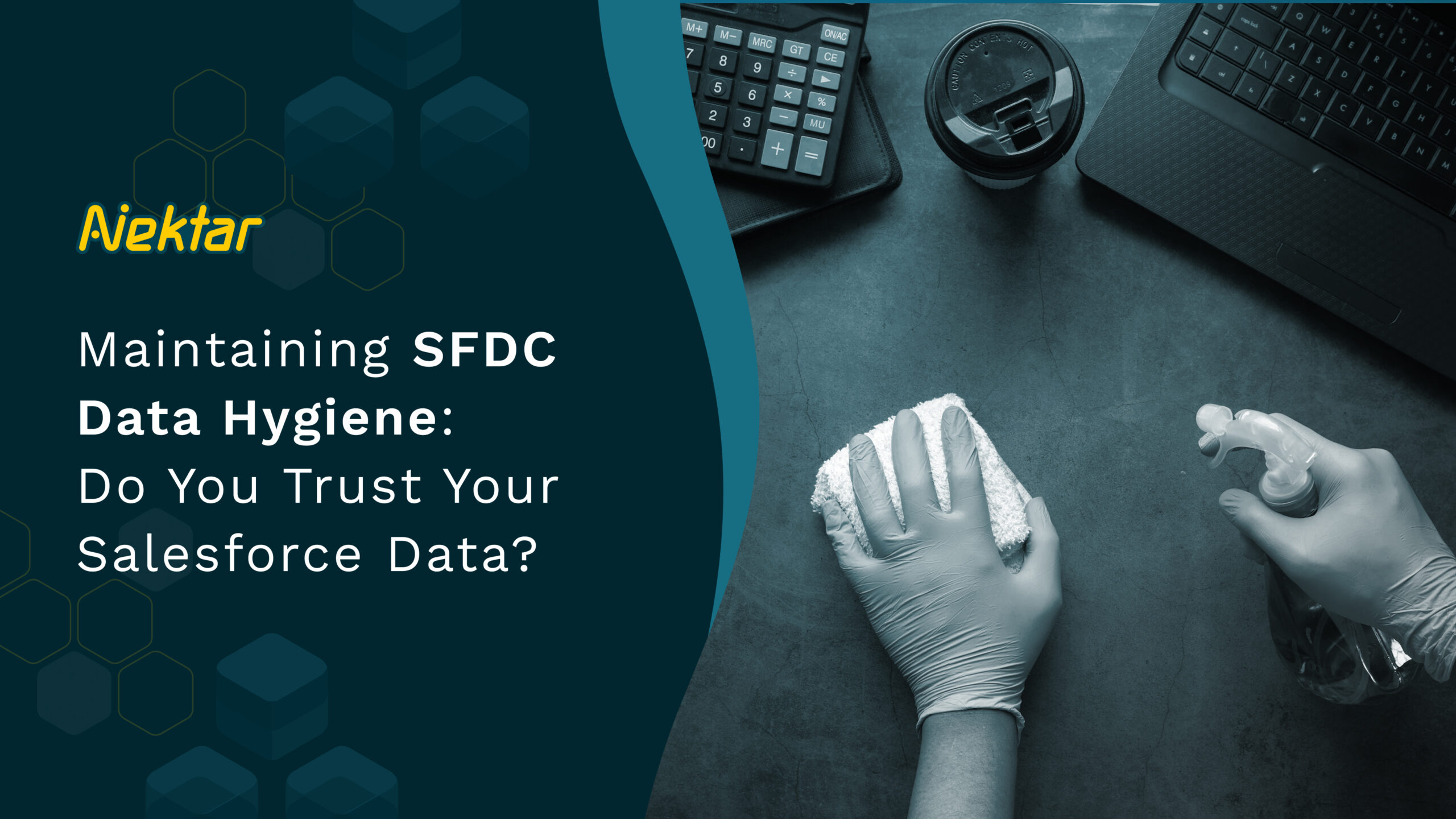As a Salesforce user, you know how important it is to keep your data clean and up-to-date. But let’s face it, maintaining Salesforce data hygiene can be tedious and time-consuming. However, it’s a task that must be addressed to maximize the value of your Salesforce investment.
Understanding the importance of Salesforce data hygiene and how it impacts your business is very critical. And this is precisely what we will be discussing in this article. There will be a lot of valuable insights and practical tips for keeping your data accurate and trustworthy.
So, if you’re ready to take your Salesforce data hygiene to the next level, let’s dive in.
What Does Salesforce Data Hygiene Mean?
Salesforce data hygiene is the process of keeping your Salesforce data accurate, complete, and up-to-date. Data hygiene ensures your information is trustworthy and can help make informed business decisions.
Without proper data hygiene, you risk making bad decisions based on incomplete or inaccurate data. According to Gartner, poor data quality can cost organizations $15 million annually.
Now, you may wonder what good Salesforce data hygiene looks like? A good data hygiene practice involves the following:
- Regularly reviewing and cleaning up your data
- Ensuring that all fields are filled in correctly
- Removing duplicates
- Updating records as needed
- Setting up processes and automation
Think of Salesforce data hygiene like brushing your teeth. Just like you brush your teeth daily to maintain good dental hygiene, you must regularly clean and maintain your Salesforce data to ensure good data hygiene. It may not be the most exciting task, but it’s essential for the health and success of your business.
Why Does Salesforce Data Hygiene Matter?
Data hygiene in Salesforce impacts every aspect of your business. Every team relies on accurate and complete data to make informed decisions, from sales and marketing to customer service and support. According to MIT, poor data can cost a business about 15-25% of its revenue.
Consider the story of a sales leader working for a company that relies heavily on Salesforce for managing its sales pipeline. They are preparing for an important meeting with their team to review the progress and discuss strategies for reaching quarterly goals.
They log in to Salesforce and pull reports to gather the needed data. However, as they go through the data, they notice the following discrepancies:
- Accounts with missing information
- Contacts with incorrect email addresses
- Opportunities are still marked as “open” even though they were closed weeks ago
Long story short, data hygiene in Salesforce is critical because it directly impacts the success and growth of your business. By enforcing an automated data hygiene policy, you can ensure your Salesforce data is a valuable asset that helps you achieve your goals rather than a liability that holds you back.
Perils of bad data in Salesforce
Here are some hazards of bad data in Salesforce that can derail your sales efforts.
1. Long sales cycles
If your team is working with bad data, it can take much longer for them to close deals. They may spend a lot of time chasing leads that aren’t actually qualified or pursuing deals with no chance of closing. You wouldn’t want to make it any further longer when the usual b2b sales cycle is 84 days long.
2. Stalled deals
Inaccurate and outdated information with your sales team can cause deals to stall or fall through altogether. For example, if your team is unaware that a key decision-maker has left a prospect’s company, they may continue to pursue the deal even though it’s unlikely to close. It can lead to a lot of wasted effort and missed opportunities.

3. Inaccurate forecasts
If your team relies on inaccurate information to predict future sales, it can throw off your entire sales strategy. It can lead to missed revenue targets, lower profits, and a lack of visibility into your sales pipeline.
4. Poor customer experiences
Outdated and inaccurate customer information can lead to mistakes from your sales team, damaging customer relationships. For example, they may send a customer the wrong product or fail to promptly follow up on a support ticket. These mistakes can lead to unhappy customers, negative reviews, and lost business.
5. Churn
If your team is working with inaccurate customer data, they may be unable to effectively identify and address issues, leading to churn. For example, they may not realize that a customer is dissatisfied with a product or service until it’s too late to do anything about it. It can lead to lost revenue and a damaged reputation.
Check the gaps in your salesforce reports, with an no-obligation free CRM scan report.
5 Best Practices to Ensure Salesforce Data Hygiene
Now that we’ve discussed the perils of bad data in Salesforce, let’s talk about how to ensure Salesforce data hygiene. Here are five data hygiene best practices to follow:

1. Conduct regular data audits
It’s essential to audit your Salesforce data to address issues and drive revenue. You can start by reviewing data fields, identifying duplicates, and cleaning up outdated or inaccurate information. Conducting regular data audits will allow you to ensure your data is accurate and up-to-date.
2. Automate data cleaning processes
Automating data cleaning processes is one of the best ways to ensure Salesforce data hygiene. You can use tools or applications to automatically detect and remove duplicate records, validate data, and standardize formats. Automation can save time and resources while ensuring your data is consistently clean and reliable.
3. Adopt a minimalist data stack
Adopting a minimalist data stack means only collecting and storing the data essential for your business operations. Minimizing the amount of data you collect and store has several benefits. Besides reducing the risk of errors, you can also simplify data management.
4. Enforce quality standards
Establishing and enforcing quality standards ensure you are always at the top of your game, and data is no different. Data quality standards can involve defining data validation rules, creating data entry guidelines, and training employees to input and manage data properly. A quality data policy will ensure that your data is consistent and accurate to use whenever you want.
5. Delete unnecessary data
Finally, it’s important to delete unnecessary data from Salesforce regularly. You can start by removing outdated records, deleting duplicate records, and purging ones that are no longer relevant or necessary. You can reduce clutter and streamline your data management processes by deleting unnecessary data.
Supercharge your CRM data today with Nektar

Nektar’s Data+ is a powerful tool that enables AI-assisted automation to make your CRM data-packed and super smart. With Nektar, you can automate the process of enriching Opportunity Contact Roles on Salesforce. You don’t have to spend hours manually updating contact roles; Nektar will do it for you automatically.
But that’s not all – Nektar can also automatically build out the buying committee map as opportunities progress. It is a game-changer for businesses that deal with complex sales cycles and multiple decision-makers.
Nektar’s proprietary machine learning abilities mean that it is constantly learning and improving, adapting to changes in your CRM data and ensuring everything is up-to-date and accurate. It is particularly important if your business deals with large amounts of data and needs to ensure that everything is always up-to-date.
If Salesforce data hygiene efforts is on top of your radar this quarter, give Nektar’s solution a try. Contact us to learn more about Data+.
FAQs
1. How do I clean up data in Salesforce?
To clean up data in Salesforce, you can use tools like Nektar’s Data+. The tool will help you identify and remove duplicate records, standardize data formats, and ensure data accuracy.
2. What is dirty data in Salesforce?
Dirty data in Salesforce refers to inaccurate, incomplete, or inconsistent data. This data can negatively impact sales forecasting, customer relationship management, and marketing campaigns.
3. What is a data hygiene process?
Data hygiene involves regular maintenance tasks to ensure data accuracy, completeness, and consistency. It includes activities like data cleansing, data standardization, and data enrichment.
4. What is basic data hygiene?
Basic data hygiene refers to the fundamental data management practices that every business should follow. These include maintaining data backups, implementing security measures, and ensuring accuracy.
5. What is the purpose of data hygiene?
The purpose of data hygiene is to maintain high-quality data that can support business operations and decision-making. Businesses can improve sales performance and enhance customer satisfaction by ensuring accurate and complete data.







